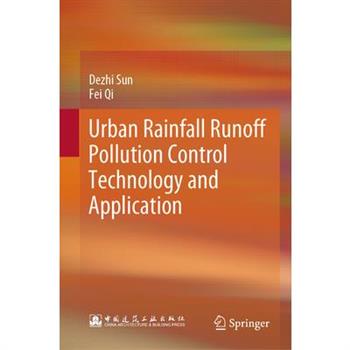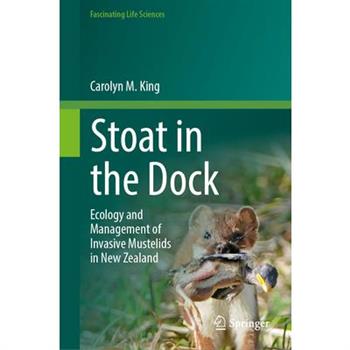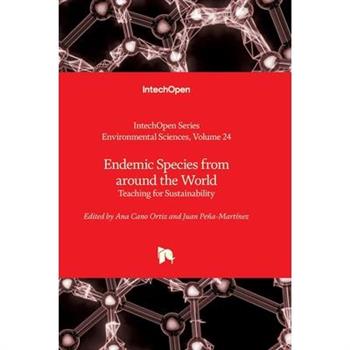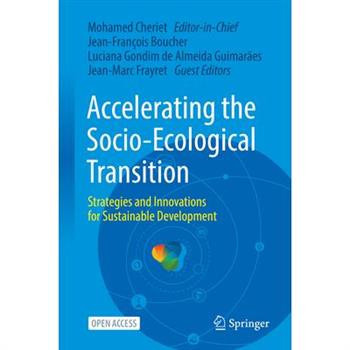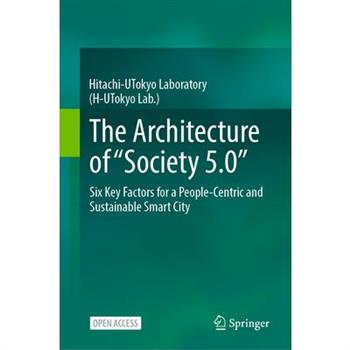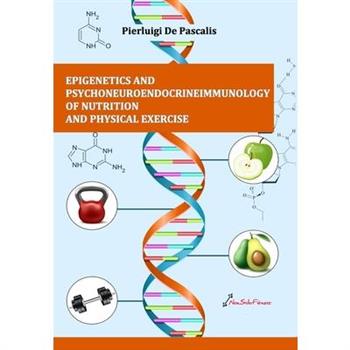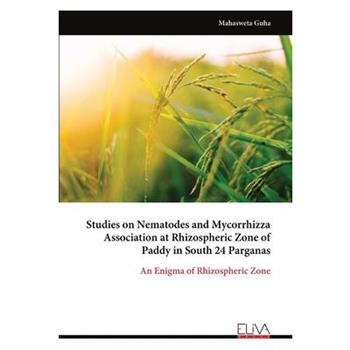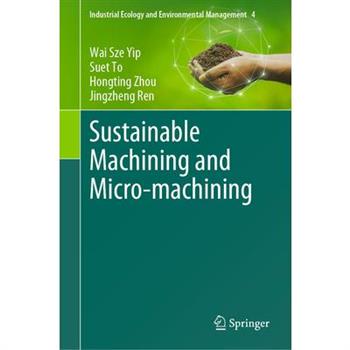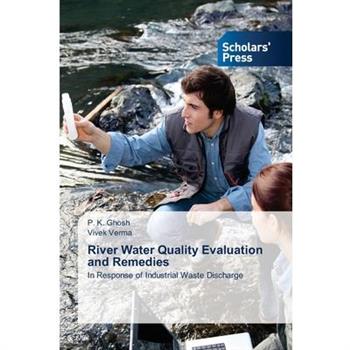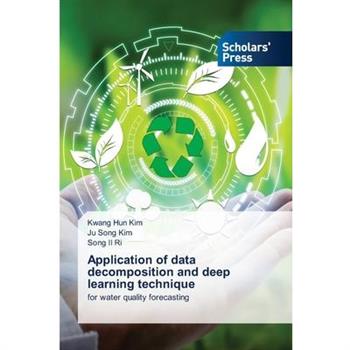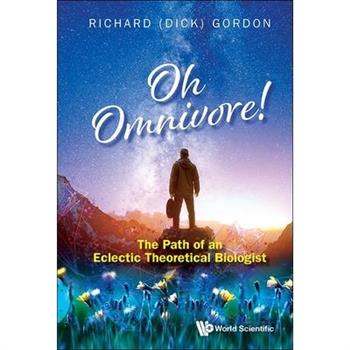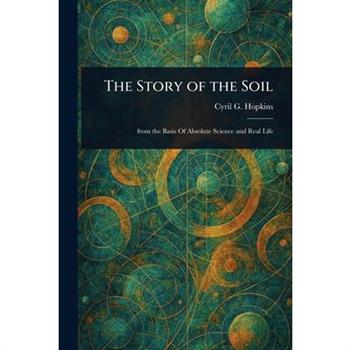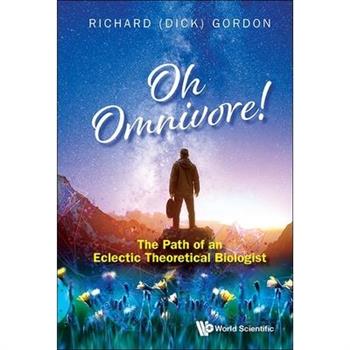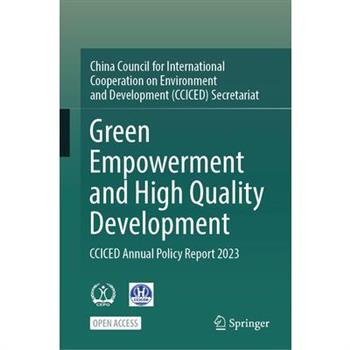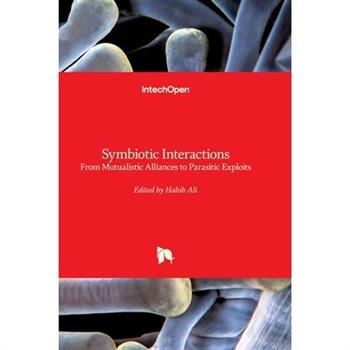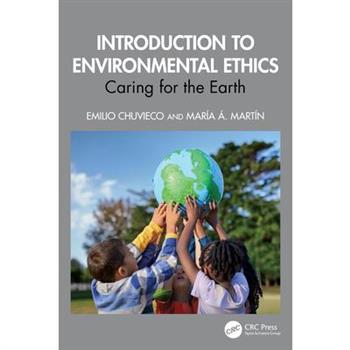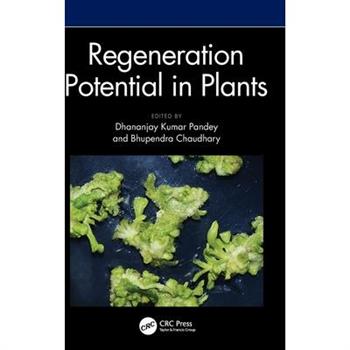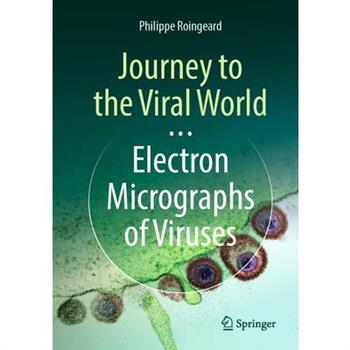Multispecies Justice
Utilizing a multispecies lens and anticolonial framework, contributors to this special issue seek to reconceptualize justice to include beings beyond the human realm. The authors imagine how existing political institutions--which determine the meaning and distributions of value and power--might be formed and transformed in ways that respond to and afford justice in the lives, relations, and socialities of other-than-human beings. This institutional shift, the authors argue, would disrupt uneven fields of identity-based power, inequality, marginalization, and privilege. It would also foster practices of living together in ways that are hospitable to a broader range of subjects, both human and nonhuman, at a time of socio-ecological unraveling, threat, and instability. Essays cover a variety of topics, including the subterranean estrangement of stygofauna, slaughterhouses and factory farms, anticolonial conceptions of justice, critical plant studies, ecofeminism, and Indigenous cosmopolitics. The authors of this collection engage with methods and concepts derived from fields including cultural theory, anthropology, political theory, philosophy, art, history of science, queer/feminist theory, law, and conservation science. Contributors: Ravi Agarwal, Margaret Barbour, Danielle Celermajer, Sophie Chao, Sria Chatterjee, Janet Lawrence, Dalia Nasser, Astrida Neimanis, Susan Reid, Daniel Ruiz-Serna, Hayley Singer, Christine Winter
The Maryland Master Naturalist’s Handbook
An essential guide to Maryland's ecosystems, history, and conservation.Immerse yourself in the wonders of Maryland's diverse ecosystems with The Maryland Master Naturalist's Handbook. Edited by seasoned environmentalists McKay Jenkins and Joy Shindler Rafey, this essential guide explores the intricate tapestry of Maryland's natural world, from the geological foundations of the Susquehanna River to the vibrant ecosystems of the Chesapeake Bay. This book illustrates the deep connections among the state's history, its people, and the land they have long inhabited. It journeys through forests, rivers, and mountains while uncovering the complex interplay of flora, fauna, and human communities. Learn from experts in fields ranging across urban ecology, entomology, and climate science, who share their insights and passion for environmental stewardship. Essays cover essential topics such as: - Maryland land use history- Chesapeake Bay and urban ecology- Environmental justice- Geology, soils, and botany- Invasive species- Birds, insects, fish, amphibians, reptiles, and mammals- Citizen science- Climate change in MarylandThis volume serves as the primary text for the Maryland Master Naturalist training course and encourages a broader audience to engage in ecological restoration and conservation efforts. Whether you're a budding naturalist or an experienced environmentalist, this book will deepen your understanding of Maryland's ecological systems and empower you to contribute to the preservation of its natural beauty.
Wildlife Conservation - Natural and Human-Influenced Ecosystems
This book, Wildlife Conservation - Natural and Human-Influenced Ecosystems, gives a very interesting collection of case studies on the current problems, challenges, and difficulties of this important and scientifically interesting applied ecological research area. This is a critical topic because abundant biodiversity enhances ecosystems' resilience, allowing them to effectively cope with and bounce back from various environmental stresses and disruptions. An effective strategy should be based on fundamental principles that cover the duties and obligations of different stakeholders within the wildlife preservation sector, including elected and appointed officials, conservation experts working in governmental roles (trust managers), non-governmental organizations, and the general public. I am sure this book will be very useful for everybody - researchers, teachers, students, government officials and activists committed to nature protection, or others interested in the field - who would like to get some insight into this part of the complex phenomena of biodiversity conservation.
Ecosystem-Based Mitigation
Ecosystem-Based Mitigation: Harnessing Nature for Climate Solutions, Biodiversity Conservation, and Sustainable Development provides a comprehensive exploration of the critical role ecosystems play in addressing climate change. It examines the potential of forests, wetlands, grasslands, and coastal ecosystems to act as natural carbon sinks while delivering co-benefits such as biodiversity preservation, improved livelihoods, and enhanced climate resilience. This book equips professionals with actionable insights into ecosystem-based approaches, including strategies for carbon sequestration, innovative restoration techniques, and the use of advanced tools such as remote sensing and Geographic Information Systems (GIS) for monitoring and assessment. It also addresses the challenges of implementation, offering practical solutions to overcome financial, institutional, technical, and social barriers. Designed for policymakers, researchers, and practitioners, this resource emphasizes collaboration and innovation as drivers for scaling nature-based solutions. The book outlines pathways for integrating these approaches into climate strategies, development planning, and policy frameworks, ensuring alignment with global sustainability goals. Grounded in practical applications and forward-looking perspectives, Ecosystem-Based Mitigation serves as a vital guide for professionals seeking to advance climate action through the sustainable management of ecosystems.
Ecosystem-based Adaptation
Build climate resilience with nature-based solutions. As the impacts of climate change accelerate, Ecosystem-based Adaptation (EbA) emerges as a powerful strategy to safeguard ecosystems, protect communities, and promote sustainable development. This timely and authoritative book explores how natural systems-forests, soils, wetlands, and coastal ecosystems-can be restored and managed to reduce climate risks and support biodiversity. Written for professionals, students, and decision-makers in the fields of environmental science, climate policy, and sustainable development, this book provides practical frameworks for implementing EbA at local, national, and global levels. Inside this book: Clear definition of Ecosystem-based Adaptation and its relevance to climate adaptation and mitigationDetailed analysis of EbA strategies across terrestrial, freshwater, and marine ecosystemsExploration of biodiversity, soil health, and sustainable farming in enhancing adaptive capacityGuidance on policy integration, financing mechanisms, and community-based approachesAlignment with global frameworks including the UN Sustainable Development Goals and the Paris AgreementWhy this book matters: Provides an integrated, science-based approach to nature-based climate adaptationDelivers actionable strategies for practitioners, researchers, and policy professionalsIdeal for use in environmental planning, natural resource management, and climate resilience programsSupports implementation of green infrastructure and sustainable ecosystem management practicesIf you're working to address climate risks and implement sustainable adaptation strategies, Ecosystem-based Adaptation is your essential resource. Order now to unlock practical insights into one of the most effective tools for building a resilient future.
Endemic Species from around the World - Teaching for Sustainability
Endemic Species from around the World - Teaching for Sustainability is an invitation to explore the planet's most unique natural wonders: endemic species. These species, exclusive to specific regions, represent the richness of global biodiversity and play an essential role in the balance of their ecosystems. This book combines science, education and sustainability to offer an inspiring guide for students, educators and nature enthusiasts. Through an accessible and practical approach, you will discover how endemic species can become powerful tools for teaching about conservation and environmental action. Within its pages, you'll find strategies to foster transformative environmental awareness, connect people to their environment, and promote sustainable practices that benefit both local communities and the planet. If you are looking for inspiration, knowledge and tools to make a difference, this book is for you. Join the sustainability movement and discover how to protect what makes our world unique.
The Age of AI in the Life Sciences
Artificial intelligence (AI) applications in the life sciences have the potential to enable advances in biological discovery and design at a faster pace and efficiency than is possible with classical experimental approaches alone. At the same time, AI-enabled biological tools developed for beneficial applications could potentially be misused for harmful purposes. Although the creation of biological weapons is not a new concept or risk, the potential for AI-enabled biological tools to affect this risk has raised concerns during the past decade. This report, as requested by the Department of Defense, assesses how AI-enabled biological tools could uniquely impact biosecurity risk, and how advancements in such tools could also be used to mitigate these risks. The Age of AI in the Life Sciences reviews the capabilities of AI-enabled biological tools and can be used in conjunction with the 2018 National Academies report, Biodefense in the Age of Synthetic Biology, which sets out a framework for identifying the different risk factors associated with synthetic biology capabilities.
Accelerating the Socio-Ecological Transition
This book explores the key principles and challenges of implementing the socio-ecological transition, with a particular focus on Quebec, Canada. It addresses these issues from both research and educational perspectives, offering actionable strategies to accelerate this transition across the province's various economic sectors. The book's structure aligns with the CIRODD (Interdisciplinary Research Center for Operationalization of Sustainable Development) scientific program, organized into two major sections and 11 thematic areas. The objective is to showcase the latest advancements in socio-ecological transition, drawing on a decade of research contributions from CIRODD. This book edition will highlight key innovations, emerging trends, and impactful solutions that have shaped the field, demonstrating CIRODD's pivotal role in driving sustainable transformation. Section 1 delves into practical interventions and strategies for citizen engagement, exploring transition initiatives, urban planning, and collaborative knowledge-building models. It brings together theoretical, practical, and experiential insights, emphasizing the vital role of research and the arts in facilitating the socio-ecological transition. Section 2 equips readers with the necessary tools to support this transition, offering models and methods for analyzing complex systems. It highlights innovative digital approaches for developing circular and sustainable business models. This is an open access book.
Nature Inc.
Can "market forces" solve the world's environmental problems? The stakes are undeniably high. With wildlife populations and biodiversity riches threatened across the globe, it is obvious that new and innovative methods of addressing the crisis are vital to the future of the planet. But is "the market" the answer? As public funding for conservation efforts grows ever scarcer and the private sector is brimming with ideas about how its role--along with its profits-- can grow, market forces have found their way into environmental management to a degree unimaginable only a few years ago. Ecotourism, payment for environmental services (PES), and new conservation finance instruments such as species banking, carbon trading, and biodiversity derivatives are only some of the market mechanisms that have sprung into being. This is "Nature(TM) Inc." a fast-growing frontier of networks, activities, knowledge, and regulations that are rapidly changing the relations between people and nature on both global and local scales. Nature(TM) Inc. brings together cutting-edge research by respected scholars from around the world to analyze how "neoliberal conservation" is reshaping human-nature relations that have been fashioned over two centuries of capitalist development. Contributors synthesize and add to a growing body of academic literature that cuts across the disciplinary boundaries of geography, sociology, anthropology, political science, and development studies to critically interrogate the increasing emphasis on neoliberal market-based mechanisms in environmental conservation. They all grapple with one overriding question: can capitalist market mechanisms resolve the environmental problems they have helped create?
Wildlife in the Natural Garden
Your very own Eden: Going wild, boosting biodiversity A little unkempt, carelessly graceful and wild at heart: that's how we like our garden(er)s. And that's how a myriad of humming, buzzing and crawling creatures like them too. This book takes you on a garden visit of a very special kind. Through remarkable photographs and in his own distinctive voice, the author takes us on a journey through his natural garden, sharing with us the incredible flora and fauna he discovers along the way. In just a few short years, a light-touch approach to gardening has led to an astounding increase in wildlife and biodiversity, which this book explores and documents throughout the seasons. Come face to face with nature on a very personal garden tour. Discover a miraculous world in miniature that lives and thrives all around us, and feel inspired to create safe havens and habitats for wildlife in your own gardens too.
Euthenics, the Science of Controllable Environment
Geology of the Netherlands
Below the famously flat surface of the Netherlands lies a fascinating world of buried mountains and valleys, which can only be unraveled with drillings, geophysical techniques and geological understanding. Thorough exploration for hydrocarbons, groundwater and minerals produced a wealth of data and knowledge about the Dutch subsurface and its various uses. The second edition of this book, originally published in 2007, provides access to that wealth with a thoroughly revised and updated description of the Paleozoic to recent geology of the Netherlands, including the offshore. It covers applied geology with chapters on oil and gas, coal and peat, rock salt, groundwater, construction minerals, silica sand, underground storage and sequestration, and geothermal energy. It treats the natural and anthropogenic geohazards of seismicity and subsidence. Finally, it illustrates how data and knowledge of the Dutch subsurface are disseminated by the Geological Survey of the Netherlands, part of research and technology organisation TNO. Geology of the Netherlands is a comprehensive reference work for geologists, engineers, geoscience students, and all others who wish to know more about the relevance and applications of geology in the Netherlands.
Introduction to Environmental Ethics
A comprehensive introductory textbook that integrates environmental ethics with social and religious perspectives, this cross-disciplinary approach helps students understand the depth and breadth of environmental issues in a globally relevant way. Environmental problems are explained by ecological, social, ethical, and religious dimensions that inspire environmental conservation. It underlines the reasons why intrinsic values of nature, and those who inhabit it, must be taken into consideration when making decisions that affect them. This book is also intended for those interested in understanding the environmental debate which is a critical component of environmental management.Features Presents the historical review of the environmental movement. Introduces ethical reasoning in environmental problems. Explains environmental ethic approaches and practical implications. Discusses the role of religions in nature conservation and Eco-theology. Includes exercises for reflection in each chapter to stimulate student engagement with environmental issues. This great textbook gives readers new insight into caring for the environment. It is for undergraduate and graduate students taking courses in environmental studies, geography, sociology, anthropology, and philosophy, as well as professionals in environmental management and environmental policy, and for those interested in environmental issues and the ethics of nature conservation.
Replumbing the City
Moving between shower drains, aqueducts, rain gardens, and even kitchen sinks, Replumbing the City traces the enormous urban waterscape of Los Angeles in a state of flux. For more than a century, the city of Los Angeles has relied on faraway water for the vast majority of its municipal supply, but climate change is making these distant sources much less dependable. To adapt, Angelenos--including city engineers, advocates at NGOs, and residents--are developing new water supplies within the space of the city. Sayd Randle's ethnography examines the labor of replumbing LA's sprawling water system, detailing how a desire to sustain unlimited and uninterrupted water provision for paying customers is reshaping the urban environment and its management. Tracking how such projects redistribute the work of water management, the book explores thorny questions of how the labor of climate adaptation should be mobilized and valued.
Regeneration Potential in Plants
Regeneration Potential in Plants delves into the intricate world of plant regeneration, exploring the biological and molecular mechanisms that enable plants to regenerate under different conditions. This book offers an authoritative perspective on one of the most fascinating and vital processes in plant biology, setting a benchmark for future research and applications. Unlike other volumes that focus solely on theoretical aspects, this comprehensive work bridges the gap between foundational knowledge and practical implications, showcasing its importance in fields ranging from genetic engineering to crop improvement.Key features include: In-depth coverage of somatic embryogenesis and organogenesis as pivotal regeneration pathways. Detailed descriptions of signaling pathways, gene expression and microRNAs involved in plant tissue regeneration. Insights into the latest biotechnological tools and techniques for enhancing plant regenerative capacities. Discussions on potential challenges and future directions in harnessing plant regeneration for sustainable development. This book is an invaluable resource for plant biologists, researchers, and graduate students aiming to deepen their understanding of plant regeneration. Additionally, agricultural scientists and biotechnology professionals will find practical insights into the applications of plant regeneration for improving crop resilience and productivity. By blending high-level academic content with real-world examples, Regeneration Potential in Plants equips readers with the knowledge and tools to contribute to this dynamic and essential area of plant science.
Our PFAS Legacy
Per- and polyfluoroalkyl substances (PFAS), commonly known as "forever chemicals," have emerged as one of the most urgent and far-reaching environmental and public health threats of the 21st century. Once praised for their resistance to heat, water, and oil, PFAS revolutionized consumer products and industrial applications. From nonstick cookware to firefighting foam, stain-resistant fabrics to fast food wrappers, these chemicals are deeply embedded in modern life. But their greatest strength-their durability-has become their most dangerous trait.PFAS do not break down naturally. Their strong carbon-fluorine bonds make them nearly indestructible, allowing them to persist for decades in soil, air, and water. These chemicals have been detected in rainwater, surface water, groundwater, and even remote regions like the Arctic. PFAS contamination is now a global reality.But this is more than an environmental story-it's a human health crisis. PFAS are not metabolized by the body and accumulate in blood, organs, and tissues. Once inside us, they bind to proteins and interfere with key biological functions. Studies link PFAS exposure to kidney and testicular cancers, thyroid disease, immune suppression, high cholesterol, liver damage, and developmental problems in children. Pregnant women and young children are especially vulnerable, as PFAS can cross the placenta and concentrate in breast milk.Despite growing health concerns, PFAS often go undisclosed. In the U.S., manufacturers are not required to list PFAS in product ingredients. Many companies avoid transparency due to legal or reputational risks. As a result, consumers are left in the dark and often unknowingly exposed.The contamination runs deep. In the U.S., PFAS have been found in drinking water across all 50 states. Military bases, airports, and industrial sites are major hotspots due to the use of firefighting foams. Wastewater treatment plants can't fully remove PFAS, and the chemicals are released into waterways, affecting drinking water and agriculture. PFAS also enter our food supply through crops, livestock, and fish, making the problem even harder to avoid.Efforts to address PFAS are underway but face major challenges. Technologies like activated carbon, ion exchange, and reverse osmosis can reduce PFAS in water-but they are expensive and not always effective. They also produce waste that must be carefully handled. Total destruction of PFAS requires extreme heat or new advanced technologies, which are not yet widely available.Some governments are responding. A few U.S. states and countries have moved to ban certain PFAS or regulate their levels in water. The European Union is proposing broad restrictions. The U.S. Environmental Protection Agency has issued health advisories and is considering new rules. Still, progress is slow, and enforcement uneven.Solving this crisis will require bold global action. That means banning unnecessary PFAS uses, funding safer alternatives, improving cleanup methods, and holding polluters accountable. Public awareness is also key-people need the knowledge and tools to protect themselves and push for change.We are at a turning point. Will future generations see this as the moment we took responsibility, or the time we looked away? The PFAS legacy is still being written. If we act now-with urgency, science, and justice-we can protect our health, our environment, and our future.
The Ocean of Today, the Legacy of Tomorrow
The Ocean of Today, The Legacy of Tomorrow takes you on an eye-opening journey through the intricate, fragile, and vital marine environments that sustain life on Earth. This comprehensive exploration uncovers the far-reaching impacts of climate change, overfishing, pollution, and habitat destruction on marine biodiversity. With insights into the latest scientific advancements, technological innovations, and conservation strategies, the book delves into the critical choices humanity faces in safeguarding the ocean's future. Engaging, informative, and forward-thinking, it challenges readers to rethink our relationship with the ocean and highlights the urgent need for sustainable action to protect this indispensable resource.
Beneficial Elements for Remediation of Heavy Metals in Polluted Soil
Beneficial Elements for Remediation of Heavy Metals in Polluted Soils provides readers with comprehensive information on soil pollution and beneficial elements. Each chapter summarizes the beneficial elements interaction in soil and its impact on the environment. In addition, the book covers many current environmental issues, such as pollution and monitoring of various heavy metals, organic pollutants, and environmental hormones such as pesticides. The book goes a step further by offering information on substances that have been recently confirmed and suspected to be carcinogenic, chromogenic, and transtoxic. Toxicological issues such as the type and condition of the pollutants, toxicity, mechanism of action and influencing factors, metabolic processes in vivo, and toxic damage manifestations are also addressed.
Journey to the Viral World: Electron Micrographs of Viruses
Illustrated by superb electron microscope images, combined with detailed explanations in accessible language, this book delves deep into the world of pathogenic viruses: you will learn about their morphology, their ingenious ways of invading host cells, and how they exploit the machinery of infected cells to their advantage to replicate and spread on a large scale. This book draws fascinating portraits of viruses by highlighting major infectious diseases responsible for the great epidemics that have shaped human history, such as smallpox, Spanish flu, measles, influenza, rabies, AIDS, COVID-19 and many others... And even if some of these viruses are the cause of particularly serious diseases, you can't help but be seduced by the images and aesthetics of natural viral structures. Translation of this updated and extended English edition of the book "Portraits de virus - Voyage au coeur des cellules", originally published in French by the Presses Universitaires Fran癟ois Rabelais (PUFR), was facilitated by artificial intelligence. The content was later revised by the author for accuracy.
Management of Mycorrhizal Symbiosis for Mycoremediation and Phytostabilization
Management of Mycorrhizal Symbiosis for Mycoremediation and Phytostabilization overviews the many advances that have been made in mycorrhizal research and practice. Many microorganisms are present in plant rhizosphere, among which root-associated mycorrhizal fungi are ancient fungi that have evolved along with the evolution of plants. Mycorrhizal fungi of the soil can colonize more than 80% of terrestrial plant roots, where the mycorrhizal symbiosis helps the host to obtain water and nutrients, in exchange of lipids and sugars from the host plant to the mycorrhizal fungus for its life history. The mycorrhizal extraradical mycelium can extend beyond the root zone, enabling the absorption of water and nutrients from the soil. Thus, the reciprocal symbiosis can provide an important technology for crop reduction of fertilizer inputs and environmental stewardship. Mycorrhizal fungal fertilizers have been produced commercially in Europe, Asia, and North America, which provides strong support for mycorrhizal applications in agriculture and environmental field. Therefore, there is a great need to summarize the recent research results and bring them together in a book. This book provides soil scientists and mycorrhizal researchers with a comprehensive overview of new advances in mycorrhizal fungi. It may also serve as a reference for professionals in adjacent fields working in environmental management, microbiology, and crop science.
Geohazards and Disasters
Geohazards and Disasters: Modelling Scenarios as a Challenge for the Future aims to depict an updated view of the most significant technical-scientific knowledge on the topic of geological risks and related mitigation strategies with a focus on the resilience of anthropic communities, and with an aim to sensitize them towards a prevention approach that is fed through awareness and technical competence. This book fills knowledge gaps by relating on scientific and technical progress for the conscious and sustainable management of risk in a multi-hazard perspective. This comprehensive resource will be a welcomed by researchers, academicians, graduate and undergraduate students, and professionals in the field of geology, specifically those focused on geohazards and disaster management.
Resources Management
Taking a global view of the issues around the management of natural resources and offering practical approaches to addressing them, this book will appeal to a broad range of stakeholders.
Becoming Earth
NEW YORK TIMES BESTSELLER - A vivid account of a major shift in how we understand Earth, from an exceptionally talented new voice. Earth is not simply an inanimate planet on which life evolved, but rather a planet that came to life. "Glorious . . . full of achingly beautiful passages, mind-bending conceptual twists, and wonderful characters. Jabr reveals how Earth has been profoundly, miraculously shaped by life."--Ed Yong, Pulitzer Prize winner and bestselling author of An Immense World FINALIST FOR THE LOS ANGELES TIMES BOOK PRIZE - FINALIST FOR THE OREGON BOOK AWARD - AN AMERICAN LIBRARY ASSOCIATION NOTABLE BOOK OF THE YEAR A BEST BOOK OF THE YEAR: Smithsonian, Chicago Public Library, Booklist, Scientific American, NatureA BEST BOOK OF THE SUMMER: The Atlantic and NPR's Science Friday One of humanity's oldest beliefs is that our world is alive. Though once ridiculed by some scientists, the idea of Earth as a vast interconnected living system has gained acceptance in recent decades. We, and all living things, are more than inhabitants of Earth--we are Earth, an outgrowth of its structure and an engine of its evolution. Life and its environment have coevolved for billions of years, transforming a lump of orbiting rock into a cosmic oasis--a planet that breathes, metabolizes, and regulates its climate. Acclaimed science writer Ferris Jabr reveals a radical new vision of Earth where lush forests spew water, pollen, and bacteria to summon rain; giant animals engineer the very landscapes they roam; microbes chew rock to shape continents; and microscopic plankton, some as glittering as carved jewels, remake the air and sea. Humans are one of the most extreme examples of life transforming Earth. Through fossil fuel consumption, agriculture, and pollution, we have altered more layers of the planet in less time than any other species, pushing Earth into a crisis. But we are also uniquely able to understand and protect the planet's wondrous ecology and self-stabilizing processes. Jabr introduces us to a diverse cast of fascinating people who have devoted themselves to this vital work. Becoming Earth is an exhilarating journey through the hidden workings of our planetary symphony--its players, its instruments, and the music of life that emerges--and an invitation to reexamine our place in it. How well we play our part will determine what kind of Earth our descendants inherit for millennia to come.




